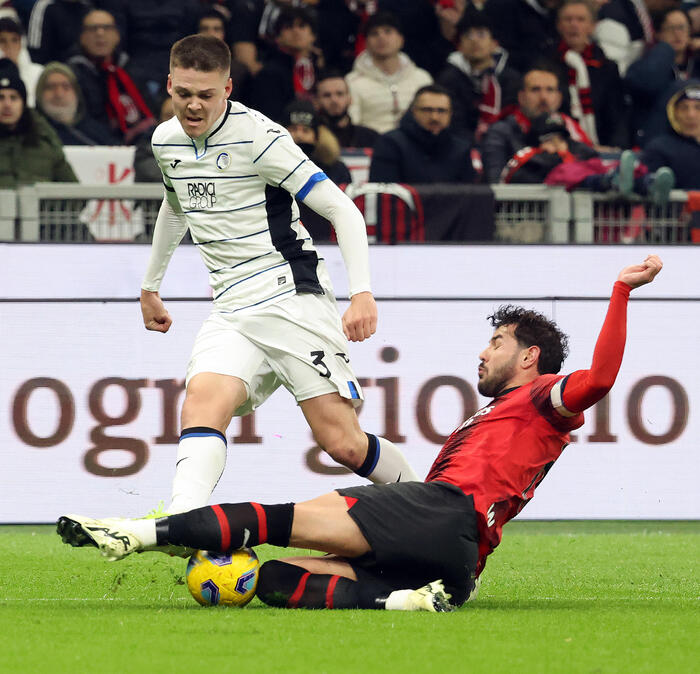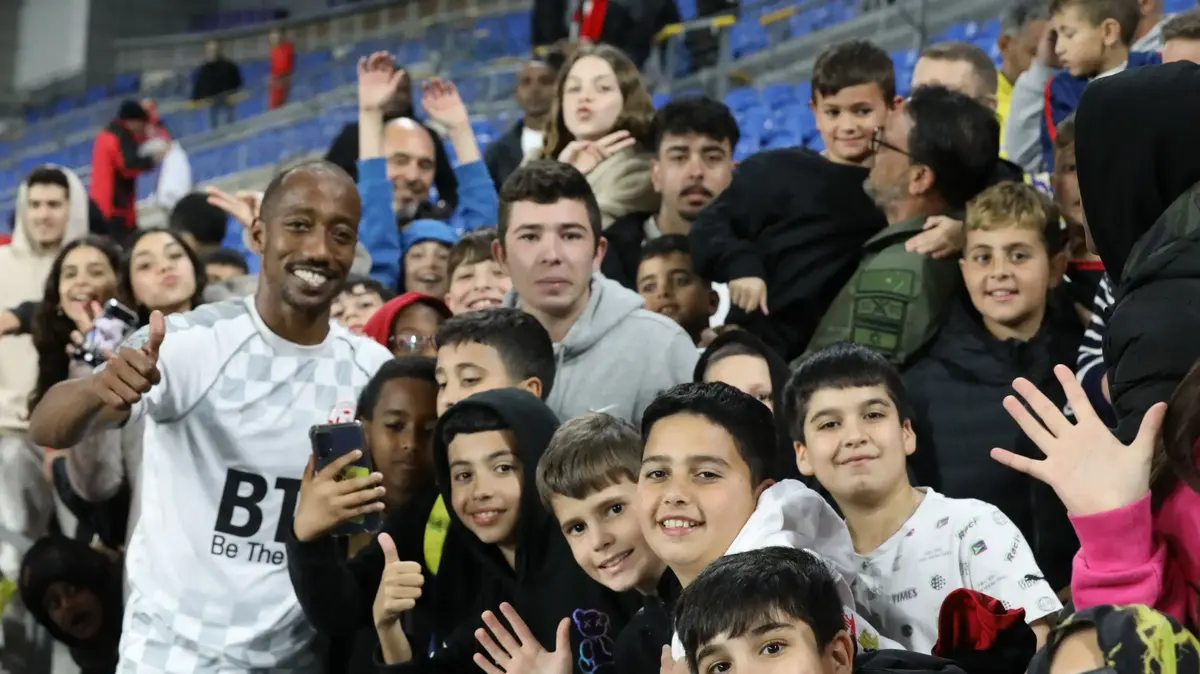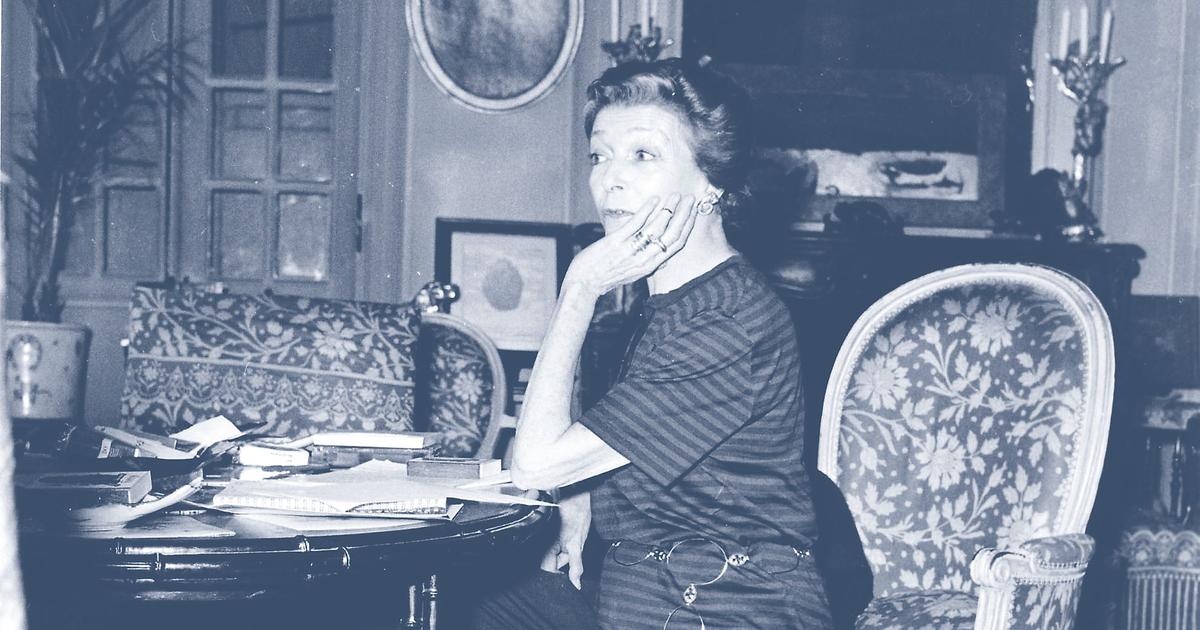Since its appearance in Spain in 1982, no World Cup had been lived without the presence of Diego Armando Maradona.
Whether as a player, coach, commentator or fan, his figure was associated with the great football event.
In Mexico 86 he transcended from being a human being to a living myth.
In United States 94 he shared his problems with the rest of the mortals.
This November marks two years since his death —which had a planetary impact— and the Qatar event begins: it will be the first time that the competition is held in autumn.
An inexhaustible factory of anecdotes —like the one about that day when, in the middle of a discussion, he blurted out to his interlocutor: “You, what do you think?
Maradona?”—Unfortunately, Maradona literature has reached its zenith in recent months.
Too soon.
Maradona's Phenomenology
(Altamarea) is a book in which six authors —philosophers, journalists or political scientists— approach its complex enormity from different perspectives.
The illusion generated by the mere pronunciation of his name and the prospect of seeing him play, the contradictions faced by those who could not ignore his personal facet, his relationship with Naples.
The book includes a text by the former physical trainer for him, Fernando Signorini, as well as an interview with the referee who directed the game in which the hand of God was born.
Signorini is also the voice of
Diego from within
(Planet), based on his intimate personal relationship with the star.
The journalist Guillem Balagué has also presented
Maradona: the kid, the rebel, the god
(Cúpula).
In the recurring debate about who has been the best soccer player in history, he recently slipped into a popular poster that, through a play on words in English, opted for a guy from Northern Ireland.
Pelé
good
(good), Maradona
better
(better), George Best (the best, says the sheet).
Precisely that —
The Best
(Contra) — is the title of the soccer player's autobiography that has recently been published in Spanish.
A hard and very direct text - before his death in 2005 he had serious problems with alcohol - in which he narrates the excessive life in all areas of a character who aroused passions on the pitch and off it.
Piero Trellini raises an interesting theory: the Italy-Brazil match in the World Cup semifinal in Spain was the best 90 minutes in football history
Beyond individualities, in
The Party
(Debate), the Italian journalist Piero Trellini raises an interesting theory: the Italy-Brazil semifinal of the World Cup in Spain played in the now-defunct Sarrià were the best 90 minutes in football history.
It is an extensive chronicle that goes beyond football: it has a political and social context of all the countries involved, profiles of the characters and a minute by minute of the game.
All through the filter of a country —Italy— that did not believe in their selection and from the eyes of a Trellini who was only 12 years old when it happened.
Unusual stories from the World Cups
(Altamarea) collects the inside stories —many unpublished— that have accompanied the events since Uruguay in 1930. The Argentine Luciano Wernicke presents an entertaining book that focuses on the most human side of sport and that allows us to see to what extent football has changed .
From Argentina also comes
Boquita
(Debate), a book about Boca Juniors written in 2005 by Martín Caparrós, and that he found in his son Juan to whom he added a chapter that brought it up to the present day.
It is the history of the Buenos Aires club woven with the thread of passion.
It ranges from the tenderness and candor of the beginning to the appearance of money, marketing and violence.
It has dozens of testimonials from anonymous fans who participate, unknowingly, in an intra-history of the club that, they say, represents half plus one of the country (and explains where that statistic comes from, of course).
Maradona seen by Sciamarella.
SCIAMMARELLA
On the other side of the Atlantic, the journalist Simon Kuper has published
The complexity of Barça
(Corner).
A very interesting exercise in documentation and reporting that sought to explain the success of the last 30 years of FC Barcelona.
From the arrival of Cruyff to the bench until the departure of Messi.
The initial plan went wrong, since the sporting and institutional crisis of the club forced the author to close the volume with an accelerated turn of the script.
Kuper —who had access to numerous sources— offers a book that analyzes the role of the club in Catalan society and, at the same time, is a management and anti-management manual for a company.
Enrique Ballester is one of the voices that best represents the fans who forged their sentimental relationship with football in the nineties.
He has recently published
El fútbol no te da de comer
(Libros del KO), a selection of 87 articles published in
El Periódico
.
Fun, agile and contemporary, Ballester's texts usually start from an everyday anecdote and link up with some universal concern.
And one of the main concerns of the fans is the loss of the essence and the supposed values that make up the DNA of their teams.
In
Club on the run
(Barlin), Vicent Molins analyzes the transformation of clubs that represented a city into global brands seeking a permanent increase in revenue.
He refers to the process as the
airbnbization
of soccer.
Kiko Amat narrates the years in which violent ultras roamed freely in the stadiums.
Charged with violence, it is a portrait of the need for revenge —against everything, against everyone—
There is also room for fiction literature.
Revancha
(Anagram) is a novel by Kiko Amat that refers to the years in which violent ultras roamed freely in the stadiums.
Charged with violence, it is a portrait of the need for revenge — against everything, against everyone.
As a counterweight Carlos Marzal appears with
We were never happier
(Tusquets), an autobiographical book with which many parents will feel identified.
Since his son started playing soccer, Marzal has gone on to moonlight: driver, masseur, coach, agent, fan, ball boy...
For readers who need more football on the screen or for those who prefer to enjoy it in another way:
Chaos in the area
(UOC), by Carlos Marañón, includes 50 films that have the ball as the protagonist.
Hardly anyone will be able to combine so much simultaneous knowledge on both subjects so far apart.
“Few things have made me so excited in recent years as being asked to write about football from time to time: a break”, Javier Marías left handwritten on one of his football texts.
Wild and sentimental
(Debolsillo) is now republished with 42 short essays in which the author exposed his passion for Madrid, his nostalgia for childhood and in which his unmistakable facet of polemicist is also present.
What do you think is the best football book?
Write us an email to
babelia@elpais.es
with your choice and tell us why.
Images of the stadiums that will host the World Cup matches.GETTY
A winning literary lineup
Michael Robinson recounted that, once, recently arrived at a new team, he wanted to ask the coach a question that would suggest that he knew about football.
"Mister, what system are we going to play with?" He asked him on his first day in the locker room.
The coach, who was a few years older than the then young striker, replied: “Well, look, I have a habit of going out to play with a goalkeeper and ten players.
More than anything, so as not to come out at a disadvantage”.
Following the advice of that coach, this lineup of soccer books would start from the base, and would place two in the goal —being literature, licenses are accepted—:
Fever in the stands
(Anagram) and
Soccer in Sunshine and Shadow
(Twenty first century).
Both drag a kind of moral anathema on the part of soccer readers.
They are so good and so obvious that one tends to ignore them for fear of being identified with platitudes.
But the Englishman Nick Hornby was a pioneer in putting words to football passion with a text in the first person in which he recounts his obsessive relationship with Arsenal and in which he stands before the mirror with intelligence and a sense of humor.
The Uruguayan Eduardo Galeano was able to trace a football history from small stories, and to do it with passion, emotion and a fine touch of irony.
Like that tribute they paid to a referee who, despite having recently lost his mother, went to whistle a match.
They gave him a bouquet of flowers and the crowd applauded him.
Started the match
For defense, we would opt for the Italian experience.
The Miracle of Castel di Sangro
(Contra), is the book in which the American journalist Joe McGiniss narrated from within the entire season in Serie B of a team from a small Italian town in Abruzzo, one of the most mountainous regions of the country.
A chronicle of passion and madness that fits in the tradition of national neorealism, with characters as archetypal as they are real.
Next to him, in the center of the defense, we would place an Argentine who knows the human being well and, therefore, the forwards.
Before turning to the novel, the writer Eduardo Sacheri made the flag of the short story about soccer.
Those
Waiting for Tito
and
Lo raro empezo después
(Alfaguara) connected, first, with a generation of Argentines who felt identified and, later, with a transversal reader in Spanish who understood that these texts speak of street football, of the pitch the neighborhood... and also many other things.
The sides tend to be local produce.
In this team, the left-back would be for
me the peloton
(Corner), a selection of articles and texts by Patxo Unzueta from Bilbao through which the essence of Athletic Bilbao can be distilled and, incidentally, understand why so much people who are not from there became fans of the Basque team in their day.
For the right-back,
When we were the best (but we never won)
(Debate), the fun book written by four hands by Santi Giménez and Luis Martín that narrates the experience of the Spanish team in the 1986 World Cup in Mexico.
For the midfield, a figure of destruction of the rival game - the coach is a bit of an amarrategui - who could be interpreted by
Among the Vandals
(Anagram), an impressive chronicle of the violence of English hooligans signed by the American journalist Bill Buford , who lived with them and saw things that are difficult to imagine, including a tank in the center of Turin: a desperate attempt by the Italian authorities to stop them in the run-up to a European Cup match.
For this position we could also count on
Soccer against the enemy
(Contra), which is a travel book and a treatise on sociology and politics based on soccer.
“When a game mobilizes millions of people, it stops being a mere game”, says Simon Kuper, the author, in the introduction.
He wrote it in 1993, long before soccer became as global a business as it is today.
To make up for the brute force, a bit of game vision.
God is round
(Anagram), written by the Mexican Juan Villoro.
Villoro, a follower of a pair of teams that could be said to be compensatory, Barcelona and Necaxa, brings to football a humanist, cultivated, accurate look and with an elegant sense of humor.
His chronicles from France 98 for the newspaper
La Jornada
, collected in this volume, distill the essence of what a World Cup is.
A dose of rhythm, joy, creativity and drama will come in handy in this midfield.
Futebol
(Ariel), is a portrait of Brazil through soccer.
Alex Bellos was a Rio correspondent for
The Guardian
for five years, and he captured his experience in a book that shows the vastness and inequality of the country, as well as a way of being joyful and hedonistic.
The book discovers, for example, the origin of the colors of the Brazilian team - a contest was called to which hundreds of designers attended.
It also covers the history of the famous Maracanazo.
In the bands, where filigrees are allowed, the sets require freshness, self-confidence and audacity.
Any book in the Illustrated Hooligans series (KO Books) could have a place on this team: first-person accounts of the authors' relationship with Spanish teams.
To open the field well towards the extremes, two titles from Altamarea,
Fútbol y poder en la USSR de Stalin
, by Mario Alessandro Curletto, and
Fútbol y fascismo
, by Cristóbal Villalobos Salas.
The goal is paid.
For this reason, for the lead of this team, two difficult-to-find volumes are selected.
The first would be
Cuentos de fútbol
(Alfaguara), a volume that includes 24 stories selected by Jorge Valdano.
From Mario Benedetti to Javier Marías, through Miguel Delibes or Alfredo Bryce Echenique.
Contains the celebrated short story by Roberto Fontanarrosa
December 19, 1971
.
The second striker would be
El fútbol, mitos, rites y simbolos
(Alianza), by Vicente Verdú, a book that approaches the king of sports from anthropology and that explains, for example, the almost Freudian relationship of soccer with fathers and mothers and Above all, why a foreigner who shines in a club should never —but never— open a bar or a sports store in the city.
For what may happen, a replacement goalkeeper will be incorporated into this expedition.
Crazy Higuita and the Scorpion
(Bookolia), a book by Jaime Palomo Cousido with illustrations by Caterina Rimelli that reviews the career of the great Colombian goalkeeper.
Also a forward:
Soccer, dynamics of the unexpected
(Captain Swing), a book written by the Argentine journalist Dante Panzieri who, already in 1967, glimpsed the arrival of modern soccer.
To close this selection, a trainer is needed.
Someone with a strong hand, experience and who leaves enough anecdotes to fill a good book.
Maldito United
(Contra), written by David Peace, is the fictionalized story of Brian Clough, the coach who led second division Nottingham Forest to win the European Cup twice.
An arrogant, controversial, ambitious and vengeful guy who was loathed by many people.
"Clough is worse than the rain in Manchester, at least God stops once in a while," Bill Shankly said of him.
On one occasion, recovering from a heart problem in hospital, he received a telegram that read: "We didn't know you had one."
You can follow BABELIA on
and
, or sign up here to receive
our weekly newsletter
.
Subscribe to continue reading
Read without limits
Keep reading
I'm already a subscriber















